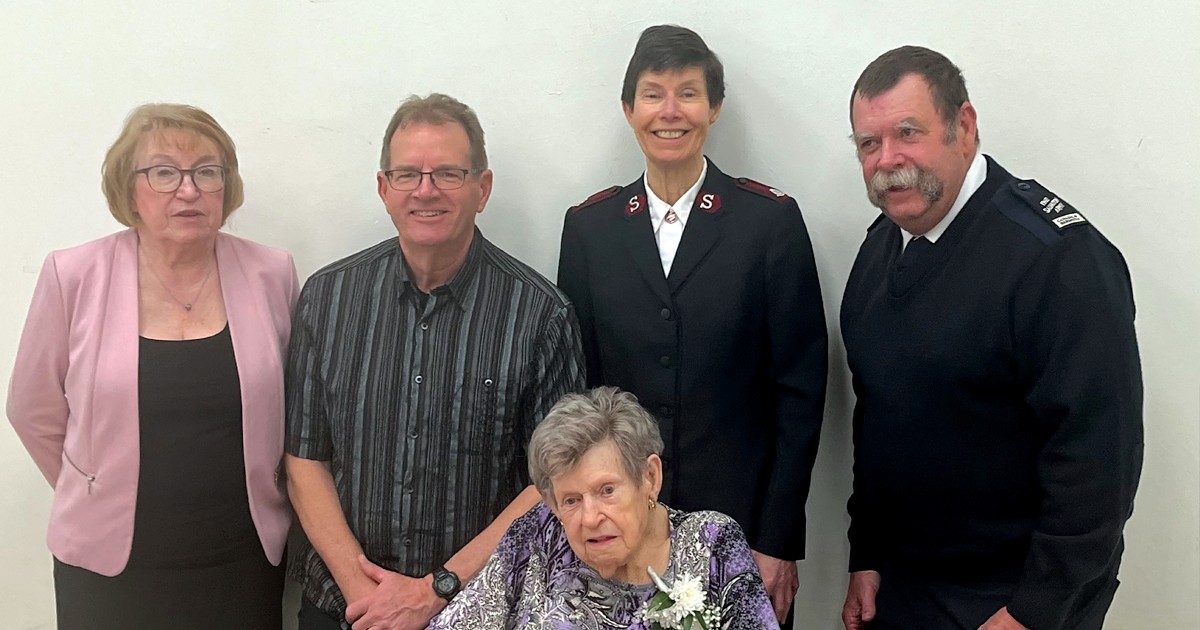Nearly 15 years ago, what was then Woodroffe Temple in Ottawa took a leap of faith, making the decision to leave their meeting space of more than 40 years to move into the dynamic and growing community of Barrhaven in south Ottawa.
After what has been an often-strenuous journey, one in which patience was tested and God’s faithfulness was demonstrated time and time again, this group of Salvationists, which now meets under the banner of The Salvation Army Barrhaven Church, is finally preparing to move into their new worship space.
As a corps officer in Barrhaven, I’ve had countless individuals ask, “So, when does the new church open?” This precipitates a wonderful teaching opportunity whereby I often respond that the church consists of people, not buildings, so … we’ve been open all along. Cheeky? Yes, a bit.
And yet, during the days of COVID lockdowns, when meeting online from the isolation of our homes was our only option, many found themselves asking if there was still a need for a physical space set apart for the meeting of God’s people.
Do church buildings matter?
In early 2022, the Christian research group Barna set out to answer this question in light of our post-pandemic reality. They posed a series of questions about transcendent spaces—physical places that bring one closer to experiencing connection with something beyond the physical world—to 2,000 adults in the United States.
The results were telling. Only 31 percent of respondents shared that they regularly visit a place they would consider spiritual or transcendent, with this figure rising to only 37 percent for self-identified Christians. More than half of American adults, including Christian adults, say they do not regularly visit a space they consider transcendent, and I would suggest that Canadian figures are likely similar.
But the results of the survey also demonstrated the benefits of such places. Many respondents, especially Christians, reported feeling peaceful, safe and hopeful when sitting in a Christian church, while a much smaller portion indicated feeling anxious or judged in the same setting.
What makes a Christian church different than any other building? What makes any physical space transcendent—a place where people feel closer to God?
Over the years, Christians have had various attitudes toward how to design a building for the purposes of worship gatherings. Indeed, when the first permanent dwellings were built by humans, they often built even more substantial homes for their gods. In Exodus 25, God commands Moses and the Israelites to build a tabernacle for worship, saying, “Have them make a sanctuary for me, and I will dwell among them” (Exodus 25:8). Later in the Old Testament, in 1 Kings and then again in Nehemiah, the Israelites establish and then re-establish Jerusalem as the centre of their society, with a permanent temple as their centre of worship. And while the earliest Christians gathered in their homes, “they continued to meet together in the temple courts” as well (see Acts 2:46). As early as the third and fourth centuries AD, Christians began to erect their own elaborate worship spaces, architectural wonders that have proven to be some of the most majestic spaces in existence.
Many will argue, of course, that any space can be transcendent, if we take the time to lean into the presence of the Holy Spirit. Several survey participants even indicated they have special spaces in their home that feel more sacred than others, perhaps a nod to those pandemic days of worshipping from our living rooms.
In the 15 years since Barrhaven Church left Woodroffe Temple, they have found transcendence in a school gymnasium on Sunday mornings. And yet, in Barrhaven Church’s two most recent Natural Church Development health surveys, “inspiring worship” has scored lower than any other health index. Could this stem from the reality that only 20 percent of the Barna survey participants considered schools to be a place of transcendence, while 62 percent responded affirmatively of Christian churches? Is it harder to worship in a school than it is a church? Perhaps.
Despite our human attempts throughout history to create awe-inspiring places of worship, God reigns supreme as the ultimate designer, with nature topping the ranking of transcendent spaces at 70 percent. God continues to meet with us from the grandeur of creation more than anywhere else on earth, including the most majestic ancient cathedrals or modern worship venues. Ultimately, God can and will reveal himself to us whenever we gather with the intention of meeting with him.
Captain Laura Van Schaick is the corps officer at Barrhaven Church in Ottawa, and the divisional secretary for women’s ministries in the Ontario Division.
Photos: pressmaster, jeremetok, jesus/stock.Adobe.com
This story is from:










Leave a Comment